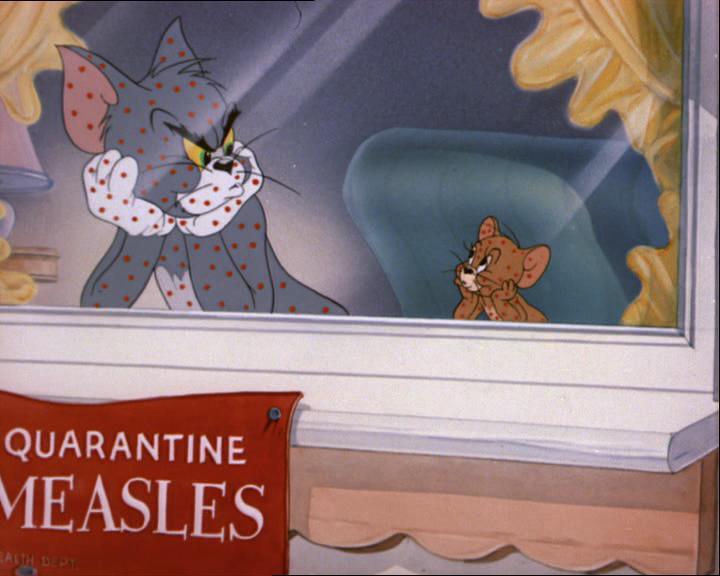Measles epidemiology and demographics
|
Measles Microchapters |
|
Diagnosis |
|---|
|
Treatment |
|
Case Studies |
|
Measles epidemiology and demographics On the Web |
|
American Roentgen Ray Society Images of Measles epidemiology and demographics |
|
Risk calculators and risk factors for Measles epidemiology and demographics |
Editor-In-Chief: C. Michael Gibson, M.S., M.D. [1]
Overview

Measles is a significant infectious disease because, while the rate of complications is not high, the disease itself is so infectious that the sheer number of people who would suffer complications in an outbreak amongst non-immune people would quickly overwhelm available hospital resources. If vaccination rates fall, the number of non-immune persons in the community rises, and the risk of an outbreak of measles consequently rises.
Epidemiology and Demographics
According to the World Health Organization (WHO), measles is a leading cause of vaccine preventable childhood mortality. Worldwide, the fatality rate has been significantly reduced by partners in the Measles Initiative: the American Red Cross, the United States Centers for Disease Control and Prevention (CDC), the United Nations Foundation, UNICEF and the World Health Organization (WHO). Globally, measles deaths are down 60 percent, from an estimated 873,000 deaths in 1999 to 345,000 in 2005. Africa has seen the most success, with annual measles deaths falling by 75 percent in just 5 years, from an estimated 506,000 to 126,000.
Developed Countries
- In developed countries, most children are immunized against measles at the age of 18 months, generally as part of a three-part MMR vaccine (measles, mumps, and rubella).
- In the 1990s, the governments of the Americas, along with the Pan American Health Organization, launched a plan to eradicate Measles, Mumps, and Rubella from the region.
- Indigenous measles has been eliminated in North, Central, and South America; the last endemic case in the region was reported on November 12, 2002. [2]
- Most recently, in 2007, the country Japan has become a nidus for the Measles. Japan has suffered a record number of cases, and a number of universities and other institutions in the country have closed in an attempt to contain the outbreak.[3]
- Outbreaks are still occurring, however, following importations of measles viruses from other world regions.
- While some smaller organizations have proposed a global MMR eradication [4], none is likely to take place until, at least, after the worldwide eradication of Poliomyelitis.
United States of America
- For example, in June 2006, there was an outbreak in Boston which resulted from a resident who had recently visited India.[1]
- In 2005, there was an outbreak in a non-immunized population in Indiana and Illinois, transmitted by an Indiana girl who visited Romania without being vaccinated.
South America
- There are also plans underway to eliminate Rubella from the region by 2010 [5]. As of 2006, endemic cases were still being reported in Bolivia, Brazil, Colombia, Guatemala, Mexico, Peru, and Venezuela, they are currently vaccinating Dominican Republic.
Developing Countries
- In developing countries, measles remains common. Unvaccinated populations are at risk for the disease.
- After vaccination rates dropped in northern Nigeria in the early 2000s due to religious and political objections, the number of cases rose significantly, and hundreds of children died.[2]
- A 2005 measles outbreak in Indiana was attributed to children whose parents refused vaccination.[3]
- In the early 2000s the MMR vaccine controversy in the United Kingdom regarding a potential link between the combined MMR vaccine (vaccinating children from mumps, measles and rubella) and autism prompted a comeback in the measles party, where parents deliberately infect the child with measles to build up the child's immunity without an injection. This practice poses many health risks to the child, and has been discouraged by the public health authorities.[4] Scientific evidence provides no support for the hypothesis that MMR plays a role in causing autism.[5] Declining immunization rates in the UK are the probable cause of a significant increase of cases of measles, 2006 being the highest on record, and 2007 already showing an increase on the previous year.[6]
References
- ↑ Boston Globe article, NPR report.
- ↑ "Measles kills more than 500 children so far in 2005". IRIN. 2005-03-21. Retrieved 2007-08-13. Check date values in:
|date=(help) - ↑ Parker A, Staggs W, Dayan G; et al. (2006). "Implications of a 2005 measles outbreak in Indiana for sustained elimination of measles in the United States". N Engl J Med. 355 (5): 447–55. PMID 16885548.
- ↑ Dillner L (2001-07-26). "The return of the measles party". Guardian. Check date values in:
|date=(help);|access-date=requires|url=(help) - ↑ Rutter M (2005). "Incidence of autism spectrum disorders: changes over time and their meaning". Acta Paediatr. 94 (1): 2–15. PMID 15858952.
- ↑ Telegraph article on increasing cases of measles